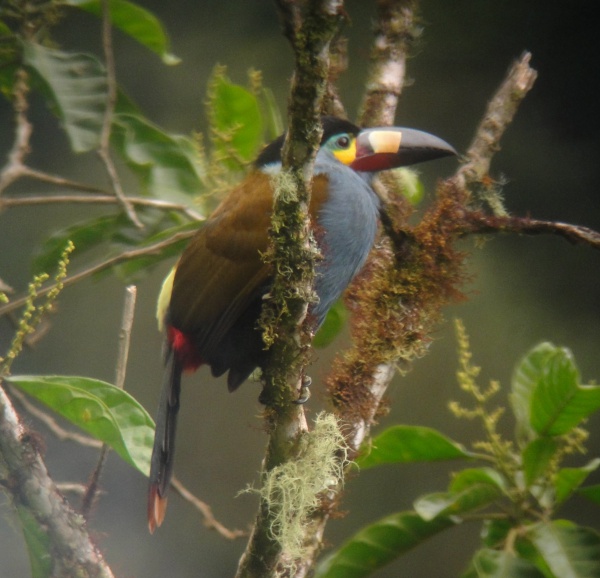Facts About Plate-billed mountain toucan
The plate-billed mountain toucan, also known as the laminated hill-toucan, is a striking bird native to the western slopes of Ecuador and the southernmost regions of Colombia. These toucans favor the high-altitude, humid montane forests of the Andes.
One of the most captivating features of this toucan is its colorful plumage. Sections of its body, including the head, wings, rump, and thighs, exhibit a variety of vivid hues. However, its most distinctive trait is its unique bill, which showcases a raised ivory-colored plate on the upper mandible. Measuring between 42 to 53 centimeters in length, the toucan's bill can extend up to 10 centimeters. Additionally, it boasts zygodactylous feet, meaning two toes point forward and two backward, aiding in securely gripping branches.
These toucans are quite vocal. Males produce a loud, repetitive call, while females emit a drier sound. Often, they can be heard duetting, their calls resonating over long distances. They predominantly inhabit the western Andean foothills of Ecuador and southwestern Colombia, thriving in humid forests that receive approximately 14 feet of annual rainfall, at elevations ranging from 1600 to 2600 meters above sea level.
The breeding season for the plate-billed mountain toucan spans from March to October. They nest in tree cavities, laying 2-3 white eggs. These eggs are incubated for around 16 days, and the chicks fledge between 46 to 60 days after hatching. Their diet mainly comprises fruits, although they occasionally consume insects and eggs. They play a crucial role in seed dispersal, contributing to the health of their forest habitats.
Unfortunately, these beautiful birds are experiencing a population decline. Habitat loss due to deforestation and poaching for the exotic bird trade has led to their Near Threatened status on the IUCN Red List. Conservation efforts, such as those at the La Planada Nature Reserve in Colombia, are vital for their survival. By protecting their natural habitat, we can help ensure that the plate-billed mountain toucan continues to thrive in the wild.

 Colombia
Colombia